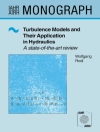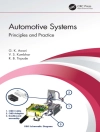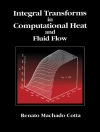Thorough reference on technologies, designs, and strategies for electric and hybrid electric vehicles, featuring contributions from international experts
Designed for readers who need to review different types of electric and hybrid vehicle designs and strategies in a single book, Smart Electric and Hybrid Vehicles: Advancements in Materials, Design, Technologies, and Modeling provides a broad overview of the field with additional resources to explore individual topics in greater depth. Abstracts, case studies, references to key data, and relevant numerical simulations are included throughout the text to aid in reader comprehension.
This book introduces the global landscape of hybrid and electric vehicles, covering the available technologies from both a mechanical and electrical engineering perspective, presenting mathematical aspects of modeling and analysis, and surveying emerging trends and economic impacts. It also explains all fundamentals, regulations, policies, perceptions, and market competition aspects of intelligent electric vehicles, as well as how smart electric and hybrid vehicles can be utilized to reduce harmful emissions and reliance on fossil fuels over the lifecycle of a vehicle.
Edited by a team of highly qualified academics, with contributions by an array of international experts, Smart Electric and Hybrid Vehicles: Advancements in Materials, Design, Technologies, and Modeling includes information on:
- Electric machine and inverter designs, maximum speed considerations, component cooling, power density, and material performance
- Battery systems, fuel cells, plug-in vehicles, mechanical drives and storage systems, and the role of power electronics tools
- The impact of trends and technologies like AI, machine vision, and digital twins, as well as related cyber security considerations
- Optimization of manufacturing waste, charging stations, sensing control, road trajectory prediction, and navigation systems
- Electrical interfaces to protect against electric shock and cost effectiveness compared to gasoline-powered vehicles
Smart Electric and Hybrid Vehicles: Advancements in Materials, Design, Technologies, and Modeling is an essential reference on the subject for mechanical engineers, industrial engineers, and academic researchers working in the automotive sector. It is also an ideal learning resource for post-graduate students in the automotive field.
Содержание
About the Editors xiii
List of Contributors xix
Preface xxiii
Acknowledgments xxvii
1 State Estimation and Cell Balancing for Lithium-Ion Batteries Powering Electrical Vehicles 1
Ankit Kumar Sharma, Shimi Sudha Letha, Poonam Syal, Sarita Rathee, and Ajay Kumar
1.1 Introduction 1
1.2 Battery Technologies Used in Electric Vehicles 4
1.2.1 Lead–Acid Battery 4
1.2.2 Nickel-Based Batteries 4
1.2.2.1 Nickel Cadmium 4
1.2.2.2 Nickel–Metal Hydride 4
1.2.3 Lithium-Ion Batteries 5
1.2.4 Sodium-Based Batteries 5
1.2.5 Metal–Air Batteries 6
1.2.6 Solid-State Batteries 6
1.3 Comparing Various Battery Technologies 6
1.4 Battery Management System 7
1.5 State Estimation 10
1.5.1 State of Charge 10
1.5.2 State of Health/Remaining Useful Life 11
1.5.3 Approaches for State Estimation 11
1.5.3.1 Direct Method 12
1.5.3.2 Model-Based Method 13
1.5.3.3 Data-Driven Method 15
1.6 Cell Balancing 19
1.6.1 Passive Cell Balancing 19
1.6.1.1 Fixed Shunt Resistor 20
1.6.1.2 Switched Shunt Resistor 20
1.6.2 Active Cell Balancing 21
1.6.2.1 Capacitor-Based Balancing 23
1.6.2.2 Inductor-Based Balancing 25
1.6.2.3 Transformer-Based Balancing 28
1.6.2.4 Converter-Based Balancing 30
1.7 Conclusion 38
References 38
2 Impacts Due to Vehicle-to-Grid and Solar Photovoltaic Integration with the Grid 55
S.L. Shimi, Roger Alves de Oliveira, Ajay Kumar, and Parveen Kumar
2.1 Introduction 55
2.2 Issues Due to Photovoltaic System and Electric Vehicle Integration with Grid 56
2.3 V2G Power Converters Responsible for Power Quality Issues 58
2.4 Advanced Control Strategies of Bidirectional Converters 64
2.5 Wireless Battery Chargers with V2G Facility 65
2.6 Soft Computing Techniques to Evaluate Power Quality Issues 66
2.7 Conclusion 67
References 67
3 Electric and Hybrid Vehicles 71
Even Sekhri, Mahmoud Ibrahim, Rolando Gilbert Zequera, and Anton Rassõlkin
List of Abbreviations 71
3.1 Introduction 73
3.2 Energy Storage Systems for EVs and HEVs 73
3.3 EV/HEV Electromechanical Drive System 78
3.3.1 Electric Motors 79
3.3.1.1 Brushless Direct Current Motor 80
3.3.1.2 Induction Motors (IMs) 81
3.3.1.3 Permanent Magnet Synchronous Motor (PMSM) 82
3.3.1.4 Externally Excited Synchronous Motor (EESM) 83
3.3.1.5 Hybrid Excitation Synchronous Motors (HESMs) 83
3.3.1.6 Switched Reluctance Motor (SRM) 84
3.3.1.7 Permanent Magnet Assisted Synchronous Reluctance Motors (PMSyn RMs) 85
3.3.2 Inverter and Controller 87
3.3.3 Control Strategies 88
3.3.3.1 Field Oriented Control (FOC) 89
3.3.3.2 Direct Torque Control (DTC) 91
3.3.3.3 Model Predictive Control (MPC) 91
3.3.3.4 Adaptive Control Strategy 92
3.4 Transmission Systems in EVs and HEVs 95
3.4.1 Types of Transmission Systems Used in EVs/HEVs 96
3.4.1.1 Single-Speed Transmission (SST) 96
3.4.1.2 Two-Speed Transmissions (TST) 98
3.4.1.3 Multi-Speed Transmissions (MST) 99
3.4.1.4 Continuously Variable Transmission (CVT) 100
3.4.1.5 Infinitely Variable Transmission (IVT) 101
3.4.1.6 Dual-Clutch Transmission (DCT) 101
3.4.2 Comparative Studies Between Distinct Kinds of Transmission Systems 102
3.4.3 Considerations for the Transmission Systems of HEVs 103
3.4.4 Transmission Efficiency and Future of Transmission Systems for EVs and HEVs 104
3.5 Differential System 104
3.5.1 Differentials in EVs and HEVs 105
3.5.2 Drivetrains of EVs and HEVs 106
3.5.2.1 In-Wheel Motor Drivetrain 106
3.5.2.2 Distributed EV Drivetrains 107
3.6 Future Directions in EVs/HEVs 108
3.7 Summary of the Chapter 109
Acknowledgment 109
Conflict of Interest 109
References 109
4 A Systematic Review on the Integration of Electric Vehicles in Maintaining Grid Stability 127
Vineet Kumar, Rintu Khanna, Ajay Kumar, and Parveen Kumar
4.1 Introduction 127
4.2 Review on EV Integration for Energy Management of Grid-Connected RESs 128
4.3 Review of EV Integration for Load Frequency Regulation 131
4.4 Review of EV Integration for Power Quality Enhancement 133
4.5 Challenges and Motivations for Future 135
References 137
5 Enhancing Efficiency 141
Khadim Moin Siddiqui, Abhinav K. Gautam, and Beer Singh
5.1 Introduction 141
5.2 Modeling of Electric Vehicle Charger 143
5.3 Working of Proposed Onboard EV Charger 143
5.4 Simulation Model of Charger: Methodology and Implementation 145
5.5 Analysis of Results: Insights and Findings 149
5.5.1 Ideal Switching of Totem-Pole Converter 149
5.5.2 Practical Switching of Totem-Pole Converter 152
5.6 Conclusion 155
5.7 Future Scope 155
References 157
6 A State of the Art of Recent Trends in Electric Vehicles Planning 159
Pankaj Kumar Dubey, Bindeshwar Singh, Abhinav K. Gautam, Deependra Singh, and Marut Nandan Tripathi
6.1 Introduction 159
6.1.1 Categorization of Electric Vehicles 160
6.1.2 Mathematical Problem Formulation 161
6.2 Results and Discussions 162
6.2.1 The Literature Survey of EVs Planning 162
6.3 Market Scenarios of EVs 172
6.4 Conclusion and Future Scope 173
References 173
7 Smart Electric and Hybrid Vehicle’s Role Toward Economic and Environmental Aspects 177
B. Reji and Anu Singla
7.1 Introduction 177
7.1.1 Transportation Sector 179
7.1.2 Electric Vehicle Market 181
7.2 Environmental Aspects of EVs and HEVs 184
7.2.1 Local Air Quality 184
7.2.2 Greenhouse Gas Emission 186
7.2.3 Battery Production and Its Recycling 187
7.3 Economic Aspects of EVs and HEVs 189
7.3.1 Economic Aspects in User’s Perspective 189
7.3.1.1 Cost of Vehicles 189
7.3.1.2 Low Maintenance and Running Cost 190
7.3.1.3 Tax, Subsidy, and Other Incentives 191
7.3.2 Economic Aspects in Social Perspective 193
7.3.2.1 Employment Creation 193
7.3.2.2 New Industrial Establishments 195
7.4 Conclusion 195
References 196
8 Modeling and Simulation Study for Power Management and Battery Degradation of Smart Electric Vehicles 199
Akhil Nigam, Hemant Sharma, Parveen Kumar, and Ajay Kumar
8.1 Introduction 199
8.2 Existing Challenges in Electric Vehicle Technology 200
8.2.1 Limited Driving Range 201
8.2.2 Insufficient Charging Infrastructure 201
8.2.3 Long Charging Times 201
8.2.4 Cost of Electric Vehicles 201
8.2.4.1 Battery Life and Durability 201
8.2.4.2 Environmental Impacts 202
8.2.4.3 Grid Integration and Energy Management 202
8.3 Existing Review of Electric Vehicle 203
8.4 Emerging Techniques of Electric Vehicles 204
8.4.1 Transportation System 204
8.4.2 Electricity Market 204
8.4.3 Distribution System Planning 204
8.5 Types of Electric Vehicles 205
8.6 Modeling Study of Electric Vehicle 206
8.7 Circuit Description 206
8.8 Operation of the System 207
8.8.1 Variation in Speed 207
8.8.2 Load Variation 208
8.9 Results and Discussion 208
8.10 Future Scope of Electric Vehicle 209
References 212
9 Design and Analysis of Bidirectional Charging Stations for Sustainability Roadmap for Smart Electric Vehicles 215
Sarasij Adhikary and Pabitra Kumar Biswas
9.1 Introduction 215
9.2 Utilization of Electricity Grid 217
9.3 EV Charging with Grid Integration 218
9.4 Benefits and Impacts of Grid Integration of EV Battery 219
9.4.1 Smart EV Charging and User Behavior Prediction and Impact on EV Smart Charging 220
9.5 Bidirectional Converter 221
9.5.1 Converter Explanation 222
9.5.2 Active Front End (AFE) Converter 223
9.5.3 DC–DC Converter 223
9.5.4 Safety Features of Bidirectional Controller 225
9.6 Mathematical Equation 225
9.7 Simulation Model of Bidirectional Converter 226
9.8 Result and Analysis 227
9.9 Miscellaneous 227
9.10 Conclusion 227
9.11 Future Scope 229
References 229
10 Enhancing Accessibility and Interaction in Autonomous Vehicles 233
G. Shanmugasundar, Janjhyam Venkata Naga Ramesh, Krishnasamy Karthik, Sampath Muthukumarasamy, Velumayil Ramesh, Sarita Rathee, and Ajay Kumar
10.1 Introduction 233
10.2 Related Works 235
10.3 Materials and Methods 237
10.3.1 Measurement and Hypotheses 237
10.3.2 Architecture of HMI 238
10.3.3 Procedure 239
10.3.4 Measurement of Situational Awareness 241
10.3.5 Evaluating the Acceptance of HMI 241
10.4 Results and Discussion 242
10.4.1 Situational Analysis 243
10.4.2 Discomfort Feeling Assessment 244
10.4.3 HMI Acceptance Evaluation 246
10.5 Conclusion 247
References 248
11 Smart Electric and Hybrid Vehicles 251
Athule Ngqalakwezi, Getrude Marape, Ashma Singh, and Parveen Kumar
11.1 Introduction 251
11.2 Mining Industry 252
11.3 Decarbonization Strategy 253
11.3.1 Electric Vehicles 253
11.3.1.1 Hybrid Electric Hybrid (HEVs) 254
11.3.1.2 Plug-in Hybrid Electric Vehicles (PHEVs) 254
11.3.1.3 Battery Electric Vehicles (BEVs) 255
11.3.1.4 Extended Range EVs (ER-EVs) 255
11.3.1.5 Fuel Cell EVs (FCEVs) 256
11.4 Electrification of Heavy Mining Haul Trucks 256
11.4.1 Hybrid Mining Haul Trucks (Hydrogen and Battery-Powered) 256
11.4.2 Mining Haul Trucks with ERS Systems 257
11.5 Electric Vehicle Critical Components 258
11.5.1 Batteries 258
11.5.1.1 Lithium-Ion Batteries 259
11.5.2 Fuel Cells 259
11.6 Conclusion 261
References 262
Index 267
Об авторе
Ajay Kumar, Ph D, is a Professor in the Mechanical Engineering Department, School of Engineering and Technology, at JECRC University, Jaipur, India.
Parveen Kumar is an Assistant Professor and Head of the Department of Mechanical Engineering at Rawal Institute of Engineering and Technology, Faridabad, Haryana, India.
Shimi Sudha Letha, Ph D, is an Associate Professor in the Electrical Engineering Department at Punjab Engineering College.
Mohd Tariq, Ph D, is a Postdoctoral Fellow at Florida International University.
Arif I. Sarwat, Ph D, is an Eminent Scholar Chaired Professor with the Department of Electrical and Computer Engineering at Florida International University.












